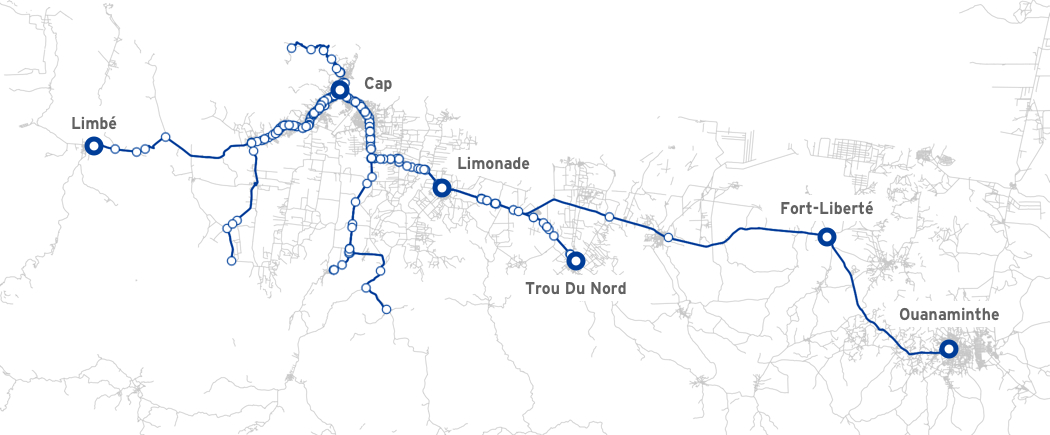Unlocking Mobility: TapTap Maps in Cap-Haïtien
by Ludovic Cartigny , Xavier EspinetWhereIsMyTransport Transport
Challenge
Haitian cities suffer from poor transportation services, and the lack of data from existing services limits improvement efforts. Tap Taps are the most popular motorized transportation mode employed across Haiti, yet there is not enough data on them as they are informal, private, and marginally regulated. So far, traditional approaches have failed to capture the extent of the Tap Taps network and its users' mobility patterns - many of whom represent the poorest and most vulnerable residents.
The World Bank transport team decided to combine traditional and non-traditional data collection methods and approaches to overcome the data gaps and map urban mobility in Cap-Haïtien, Haiti’s second-largest urban area.

Solution
Leveraging data and technology provided by WhereIsMyTransport, the World Bank’s transport team drew the first-ever General Transit Feed Specification (GTFS) maps of Tap Taps for Cap-Haïtien. Using its local surveyors' network, WhereisMyTransport helped the team identifying stops along the main routes and their associated transit schedules, providing the team with valuable information to undertake additional data collection activities along the main routes.

Impact
The study has revealed unique and much-needed maps of Cap-Haïtien’s mobility network, which did not exist previously. Moreover, the maps and analysis provide an exceptional understanding of the population accessibility and distribution across the metropolitan area of Cap-Haïtien. Once completed, the study will support Haiti’s Ministry of Public Works and Transport (MTPTC) and the Municipality of Cap-Haïtien and inform future policy and transportation investments. Finally, the team aims to replicate the analysis for Port-au-Prince.